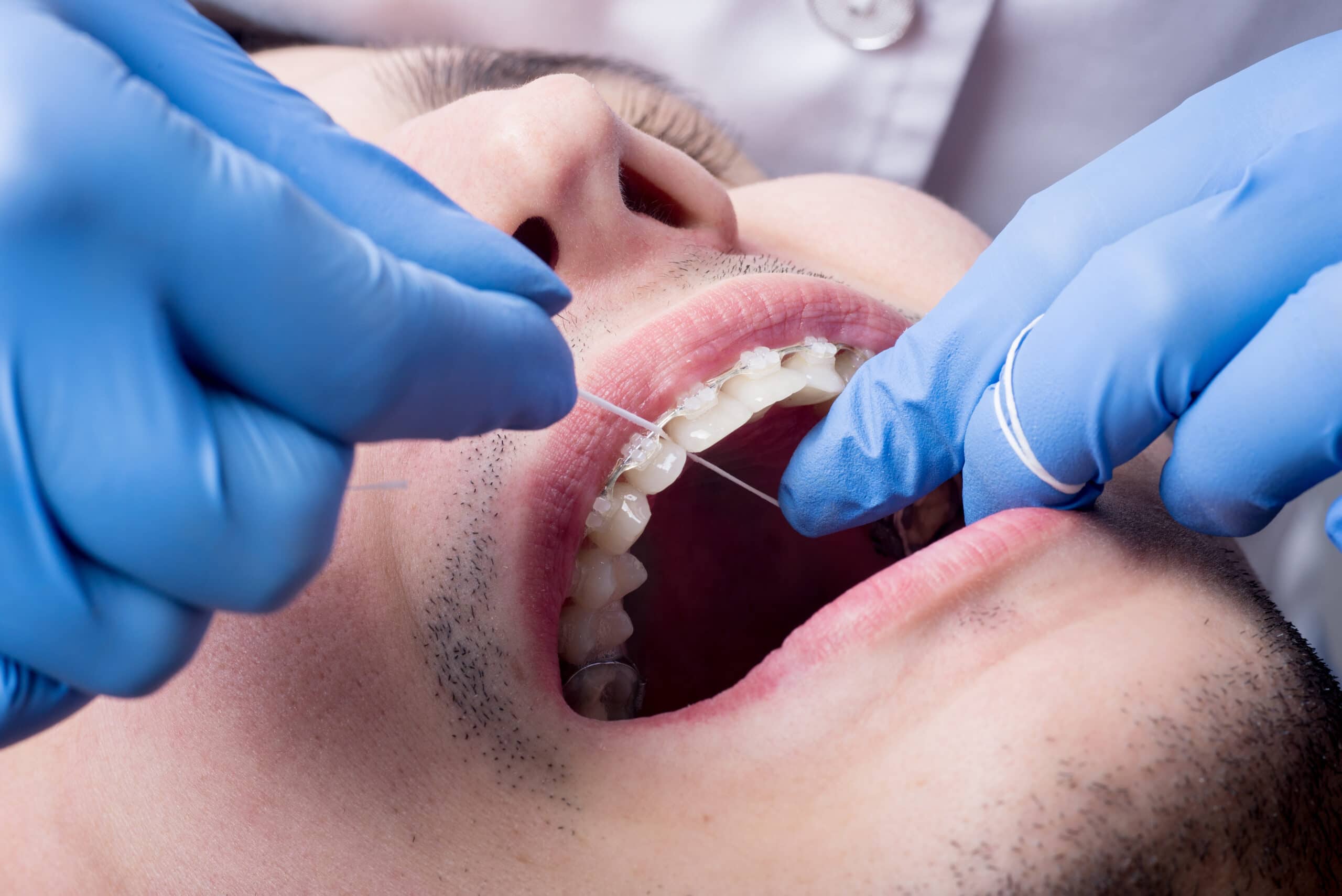
When you first start wearing braces, you may find it difficult to continue flossing regularly. While flossing appears difficult at first glance, the truth is that flossing with braces is relatively easy once you know how to. Because of how important it is to floss when you wear braces, you should brush up on how to floss correctly.
Why Is Flossing With Braces So Important?
If you’re wondering why it’s important to floss when you have braces, the reason is that food is commonly stuck in the wires and brackets that braces are comprised of. If you don’t get rid of this food, it can accelerate tooth decay. Moreover, flossing with braces is effective at removing plaque between your teeth. If left untended, plaque may lead to gum disease or cavities. As such, flossing helps prevent gum disease and cavities.
When you or a loved one has braces, the risk of gum disease, cavities, and plaque buildup rises substantially. Braces cost a considerable sum of money to keep teeth straight. While you wear braces, it’s important to aid the teeth-straightening process by keeping your teeth healthy and clean. With the right approach, you can floss daily without hurting your gums or damaging your braces.
What Is the Best Way to Floss With Braces?
Flossing allows you to get rid of extra plaque and food debris. Plaque is an invisible film that accumulates on your teeth and eventually causes tooth decay. Once you add brackets and wires to your teeth, flossing requires additional steps.
Types of Flossers for Braces
The good news is that flossing will eventually be second nature after you practice with the right tools. The primary tools available for flossing during orthodontic treatment include:
- Floss
- Floss threader
- Water flosser
- Floss picks
- Proxy brushes
Ordinary Dental Floss
Dental floss is a soft thread that you can move between your teeth with relative ease. While string floss is available in wax and regular varieties, the wax option is easier to use and more effective.
The Pros of Using Floss to Floss with Braces
- Can be done in any location
- Removes most plaque
- Most affordable option
The Cons of Using Floss to Floss with Braces
- Reaching the back of your mouth is difficult
- It may hurt your gum tissue
- Tricky to use for people with braces
Floss Threader
A floss threader is similar to traditional floss but can accommodate people with braces. A floss threader assists you in positioning the floss directly behind your braces.
The Pros of Using Floss Threader to Floss with Braces
- Very affordable
- Can be reused
- The process is the same as using traditional floss
The Cons of Using Floss Threader to Floss with Braces
- Might take time to learn
- Takes longer to floss than with traditional floss
Water Flosser (Water Pik)
This device shoots streams of water at your teeth, which is effective at cleaning your teeth. The water pressure effectively removes plaque and food debris.
The Pros of Using a Water Flosser to Floss With Braces
- Easy to use for people with braces
- A fantastic choice for people with arthritis
- Water pressure helps to improve gum health
The Cons of Using a Water Flosser to Floss With Braces
- Relatively expensive
- Requires ample storage space
- Requires water and electricity
Floss Picks
This is a kind of plastic tool that consists of a U-shaped end. At the end of the floss, pick is a small piece of floss. It’s possible to use this tool to get rid of food between your teeth.
The Pros of Using Floss Picks to Floss with Braces
- Very easy to use
- Highly portable
The Cons of Using Floss Picks to Floss with Braces
- Not as thorough as traditional floss
- Can hurt sensitive gum tissue
- Floss is worn down quickly
Proxy Floss Brushes
These are small and flexible brushes with soft bristles that are ideal for flossing. Furthermore, the shape of the tool simplifies the flossing process for people with braces. To use a proxy brush, place it under the brace wire and between your teeth. These brushes should be used alongside flossing for better results.
The Pros of Using Proxy Brushes to Floss with Braces
- Inter-dental cleaning is easier
- Effective at getting rid of plaque
- A useful tool for people with limited mobility
The Cons of Using Proxy Brushes to Floss with Braces
- The brush is sometimes difficult to maneuver
- Costs more than string floss
Tips for Flossing With Braces
Even though each tool is different, there are some general tips about flossing effectively with braces. These include:
- Flossing takes time
- Swish with water before you brush
- Brush your teeth before you floss
- Use waxed floss
- Use a fluoride rinse
- Schedule dental visits every six months
How Often Should I Floss With Braces?
While you’re wearing braces, you should floss once every day. Flossing consistently keeps plaque buildup at bay. Flossing with braces presents some challenges, these challenges can be overcome by using the right techniques. There are numerous tools available to you that can help you floss, which allows you to select the one that’s right for you. Contact us today if you have any questions or would like to schedule an appointment.


